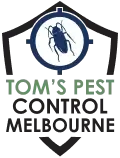Prompt, Affordable Same-Day Pest Control in Melbourne – From $129.
- Home
- Pest Treatments
- Termite Inspection & Treatment
- Ant Pest Control
- Bed Bug Treatment
- Beetle Pest Control
- Bird Proofing
- Borer Pest Control
- Cockroach Control
- Flea Treatment
- Fly Control
- Fox Trapping
- Mites Control
- Mosquito Pest Control
- Moth Control
- Possum Removal Service
- Rodent Control
- Silverfish Treatment
- Spider Control Treatment
- Wasp Control Services
- End of Lease Pest Control
- Commercial Pest Control
- Office Pest Control
- Restaurants & Cafes Pest Control
- Hospitality Pest Control
- Education Facilities Pest Control
- Hospital & Aged Care Pest Control
- Pest Control Food Industry
- Factories & Warehouses Pest Control
- Government Buildings Pest Control
- Assets & Facilities Pest Management
- Farming and Agriculture Pest Control
- Strata Pest Control
- Construction Pest Control
- Termites
- Pest Info
- Pest Inspections
- Contact
- Home
- Pest Treatments
- Termite Inspection & Treatment
- Ant Pest Control
- Bed Bug Treatment
- Beetle Pest Control
- Bird Proofing
- Borer Pest Control
- Cockroach Control
- Flea Treatment
- Fly Control
- Fox Trapping
- Mites Control
- Mosquito Pest Control
- Moth Control
- Possum Removal Service
- Rodent Control
- Silverfish Treatment
- Spider Control Treatment
- Wasp Control Services
- End of Lease Pest Control
- Commercial Pest Control
- Office Pest Control
- Restaurants & Cafes Pest Control
- Hospitality Pest Control
- Education Facilities Pest Control
- Hospital & Aged Care Pest Control
- Pest Control Food Industry
- Factories & Warehouses Pest Control
- Government Buildings Pest Control
- Assets & Facilities Pest Management
- Farming and Agriculture Pest Control
- Strata Pest Control
- Construction Pest Control
- Termites
- Pest Info
- Pest Inspections
- Contact
Mouse Spiders
About Mouse Spiders
Missulena is a genus of mygalomorph spiders, also known as mouse spiders. Found throughout Australia, these creatures are commonly spotted in towns and cities across the Sunshine Coast. They are venomous and aggressive, so it is essential to know what they look like and where they are usually found.
These spiders are medium to large and measure from 1 to 3cms in length. Females are usually three cms long, whereas males are just two cms long. Mouse spiders have black, dark blue, or black and grey glossy abdomens. Their heads are also shiny and primarily black, but some of them also have bright red heads.
Mouse spiders are known to resemble funnel webs and other trapdoor spiders. However, when you view them from the bottom, their fangs tend to cross at the tips, unlike other trapdoor spiders with parallel fangs when closed.
Mouse spiders like to live in burrows covered with a trapdoor, which is a hinged top. Their burrows are almost 12 inches deep and are a refuge from predators, parasites, and extreme weather. Male spiders wander burrow to burrow in search of mates. However, females spend most time of their lives inside one burrow.
Mouse Spider Venom
Mouse spiders have enormous fangs and fang bases and are aggressive. They are likely to bite if provoked. However, only a few species of mouse spiders are known to produce severe symptoms like a bite by the funnel web spider. In most cases, mouse spiders give dry bites, which aren’t poisonous.
Mouse Spider Reproduction
Males mature sexually at about 4 years, after which they begin wandering during the day in search of a mate. Mating usually happens within the female burrows. Female spiders lay about 60 or more eggs within an egg sac that they keep in a brood chamber off the main shaft of their burrow.
Danger To Humans
Some mouse spiders have toxic venom that may be dangerous to humans. However, there are only a few cases of severe envenomation reported to date. Male mouse spiders are often sighted; however, they rarely bite.
Spider Control
If you have spotted mouse spiders around your home, you must be careful when gardening or working in the lawn area. It is best to seal the interior of your home to restrict their entry indoors. If the mouse or other spiders are bothering you, frequent pest control treatments can help control them.
Contact the professionals at Tom’s Pest Control today to receive an inspection and a customised plan to remove pests from your residential or commercial property.
Competitive Pest Services
Protecting your property from pests is an ongoing process. Our highly skilled technicians offer high-quality pest control services to keep even the most stubborn pests away. We use modern equipment and products to deliver the best results possible without causing any harm to you, your family, your pets and the environment.
Contact Us Today
For effective pest removal services at affordable prices, speak to our experts now Call us to schedule an inspection of your property by our team of trained and experienced professionals.
FAQs
What Do Mouse Spiders Eat?
Mouse spiders like to eat insects, and their diet also includes small vertebrates and other spiders. They are seen foraging outside the burrow at night in search of their prey. They can eat ants, beetles, small lizards, and frog.
How Can You Identify a Mouse Spider?
These spiders are stout and black; depending on their species, they have abdomens that are either completely black or dark blue or black with a grey-to-white patch on top. They have wide, shiny heads; some have bright red or orange-red jaws and eye areas. Mouse spiders have long and thin legs that are dark-coloured. In general, females are larger and more solid than male spiders.
How Can You Differentiate Between a Mouse Spider and Other Large Black Spiders?
Some features are unique to the mouse spiders. First, they have bulbous heads and jaws that other black spiders don’t have. Also, their carapace is shiny, and their eyes are spread across the front of the carapace. Moreover, these creatures have short spinnerets, unlike other large black spiders.

